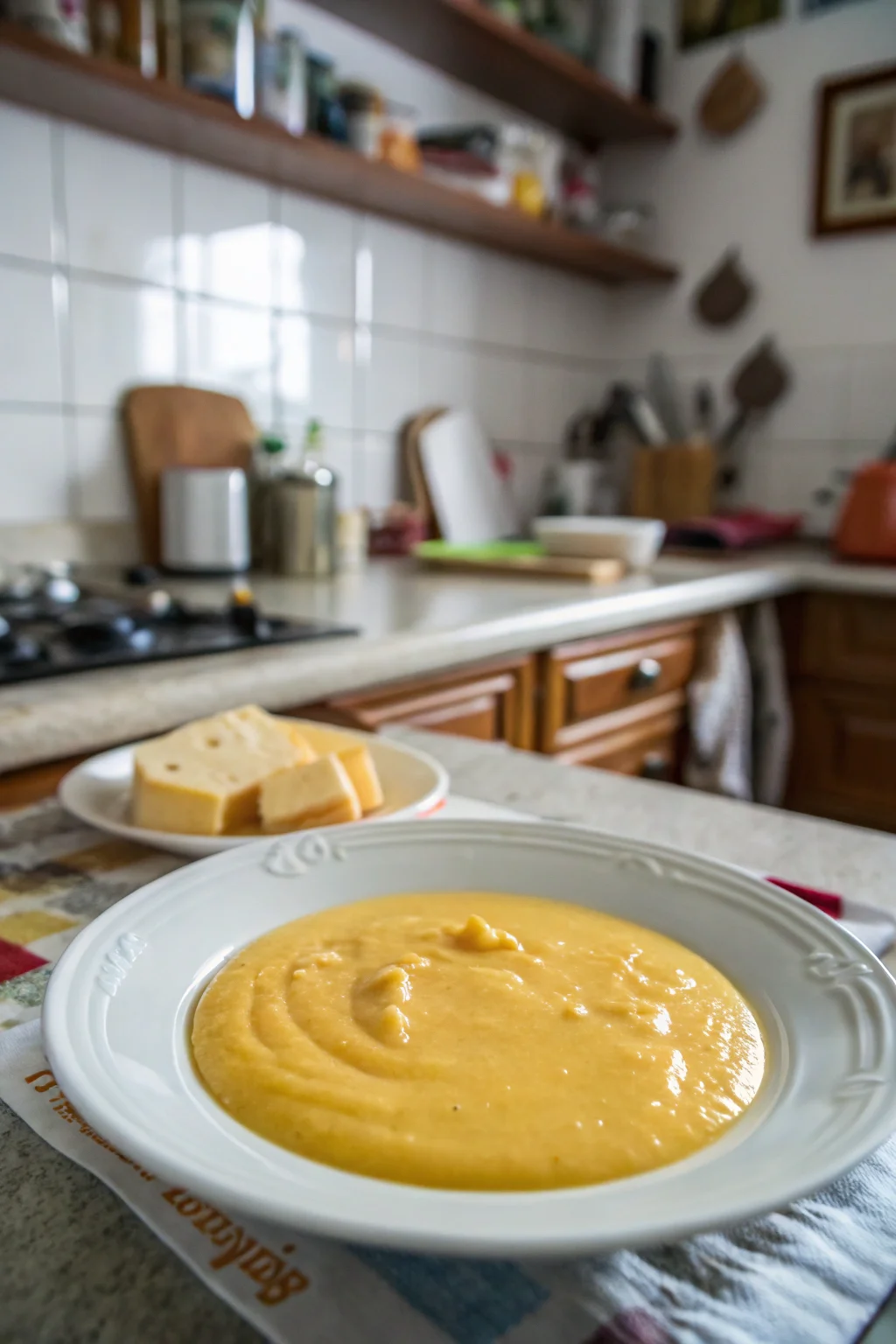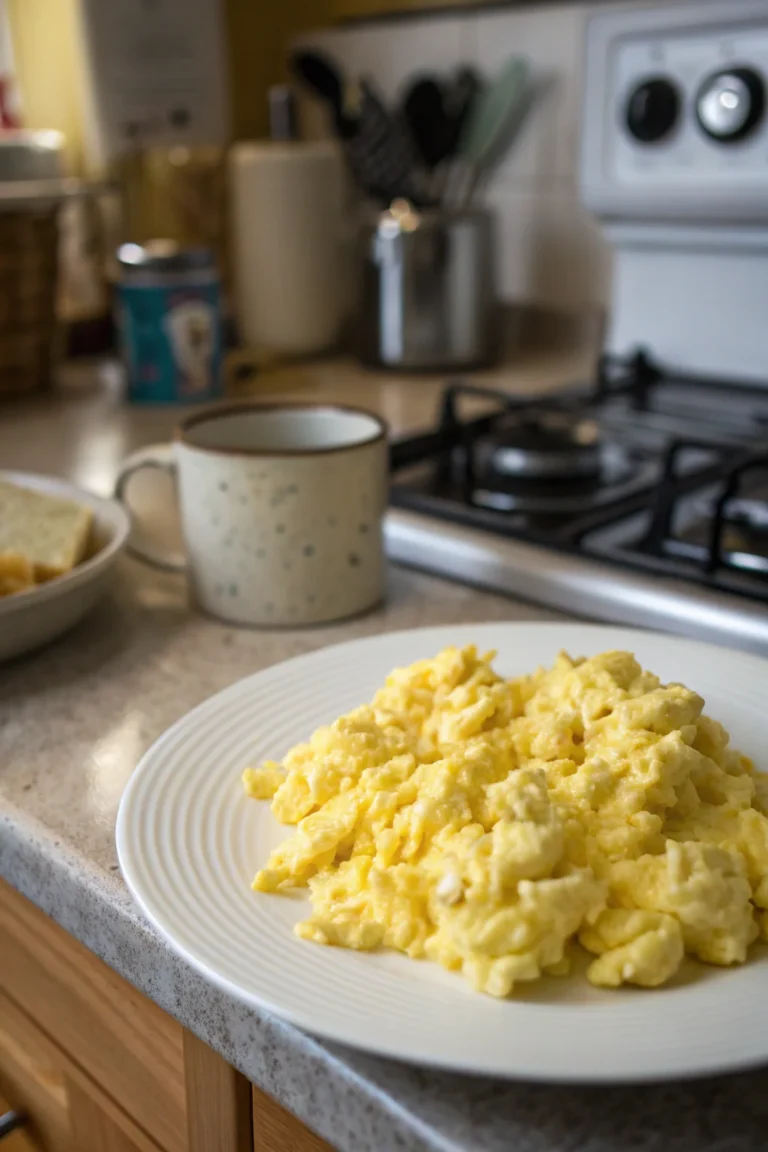Why Does Cheese Sauce Separate? | How to Fix It
Cheese sauce is a delicious addition to a variety of dishes, but sometimes it can turn into a disappointing, separated mess. Understanding why cheese sauce separates and how to fix it can save your dish and your day. This article will explore common causes of cheese sauce separation and provide practical solutions to keep your sauce smooth and creamy.
Table of Contents
What Causes Cheese Sauce to Separate?
Cheese sauce can separate due to a few common reasons:
High Heat: Excessive heat can cause the cheese proteins to tighten and squeeze out the fat, leading to separation. This is because high temperatures cause the proteins in the cheese to contract and expel the moisture and fat that should be smoothly integrated into the sauce. When the sauce is exposed to high heat, the delicate balance of emulsion is disrupted, and the sauce can “break” into a greasy, curdled mess.
Wrong Cheese: Some cheeses don’t melt well and can cause a gritty texture. Cheeses with low moisture or those that are highly aged may resist melting into a creamy texture. For instance, Parmesan or feta cheese, although flavorful, are not ideal for cheese sauces because they don’t melt smoothly. Instead, they can leave behind a grainy texture that is less than desirable.
Improper Mixing: Adding cheese all at once or too quickly can prevent it from properly emulsifying. When cheese is dumped into the hot béchamel or cream base too rapidly, the heat can cause the proteins to seize up before they can smoothly incorporate. This improper mixing leads to clumps of cheese floating in a pool of separated oil, rather than a cohesive sauce.
Using the right technique and ingredients can help you avoid these pitfalls. By understanding the core issues that lead to separation, you can take preventative measures to ensure your cheese sauce turns out perfectly every time.
How Can You Prevent Cheese Sauce from Separating?
To prevent separation:
Use Low Heat: Gradually heat the sauce to gently melt the cheese. Start with a low flame and let the ingredients come together at a gentle pace. This prevents the proteins from being shocked by sudden temperature changes, which can cause them to expel their fat content.
Choose Melting Cheeses: Opt for cheeses like cheddar, Gruyère, or Monterey Jack. These cheeses have the right balance of moisture and fat, allowing them to melt smoothly without separating. Cheddar, for example, provides a rich flavor and melts to a perfect consistency, while Gruyère offers a luxurious creaminess and a nutty undertone.
Add Cheese Slowly: Stir in cheese a handful at a time, allowing it to melt fully before adding more. This method of gradual incorporation ensures that each addition of cheese has the time and gentle heat needed to fully emulsify into the sauce. This prevents the cheese from forming lumps and helps maintain a consistent texture.
These steps ensure a smoother, creamier sauce. By taking your time and paying attention to these key details, you can prevent common issues that lead to separation.
Why Does High Heat Cause Cheese Sauce to Separate?
High heat causes the proteins in cheese to seize up and expel moisture, resulting in a separated sauce. This can be likened to how an egg scrambles when exposed to high heat: the proteins tighten, squeezing out the liquid and fat.
To avoid this:
Keep the Heat Low: Maintain a gentle simmer instead of a rolling boil. A slow, steady heat allows the cheese to melt gradually, maintaining the integrity of the sauce’s emulsion. It helps to keep the fat suspended within the liquid rather than separating.
Use a Double Boiler: This provides gentle, even heat to prevent overheating. A double boiler, where a bowl is placed over simmering water, ensures that the sauce is never in direct contact with intense heat. This method is particularly effective in managing the temperature and preventing the sauce from breaking.
Maintaining a low, consistent temperature is key to keeping your cheese sauce intact. By respecting the delicate nature of cheese, you can ensure a pleasing final product.
Can You Fix Separated Cheese Sauce?
Yes, you can often fix separated cheese sauce. Here’s how:
Remove from Heat: Stop cooking immediately to prevent further separation. This halts the cooking process, giving you a chance to address the separation before it worsens.
Whisk in Liquid: Gradually add milk or cream, whisking constantly to reincorporate the fat. The added liquid helps to re-emulsify the sauce, blending the separated fats back into the mixture. It’s crucial to whisk vigorously to break down any clumps and smooth out the texture.
Use an Emulsifier: Add a small amount of cornstarch or flour to help bind the sauce. Create a slurry by mixing a teaspoon of cornstarch or flour with a little cold water, then stir this into the sauce. The starches will help absorb some of the separated fat and moisture, bringing the sauce back together.
These techniques can help salvage your sauce and restore its creamy texture. With a little patience and the right approach, even a separated sauce can be brought back to life.
What Are the Best Cheeses for a Smooth Cheese Sauce?
The best cheeses for a smooth sauce include:
Cheddar: Melts well and adds a rich, tangy flavor. Its creamy texture makes it a favorite for classic cheese sauces.
Gruyère: Offers a smooth texture and nutty taste. This Swiss cheese is known for its excellent melting properties, making it perfect for fondue and sauces.
Monterey Jack: Known for its excellent melting properties. Its mild flavor and creamy texture make it an ideal base cheese to combine with sharper varieties for a balanced sauce.
Avoid cheeses with low moisture or high acidity, as they are more prone to separating. Cheeses like feta, goat cheese, or highly aged varieties may not melt into a smooth texture and can disrupt the sauce’s consistency.
How Does Flour or Cornstarch Help Stabilize Cheese Sauce?
Flour or cornstarch acts as a stabilizer in cheese sauces by:
Thickening the Base: Provides a stable foundation for the cheese to melt into. The starch granules swell in the liquid of the sauce, thickening it and providing a robust structure to support the emulsification of fats and proteins.
Preventing Separation: Helps emulsify the fat and moisture. By creating a suspension of the sauce’s components, the starches help to prevent the fat from separating out.
Mix flour or cornstarch with a bit of cold liquid before adding it to your sauce for the best results. This ensures that the starch is evenly distributed and prevents clumping, which can occur if added directly to hot liquids.

Why Is Consistent Stirring Important in Cheese Sauce?
Consistent stirring is crucial because it:
Ensures Even Heating: Prevents hot spots that can cause separation. Stirring constantly distributes the heat evenly throughout the sauce, ensuring that no part of it overheats.
Incorporates Ingredients: Helps cheese melt evenly into the sauce. By continuously moving the sauce, you ensure that the cheese is evenly distributed and melts uniformly, preventing clumping and promoting a smooth texture.
Regular stirring keeps your sauce smooth and prevents clumping. It also helps to maintain a consistent temperature, reducing the risk of the sauce breaking.
Can Acidic Ingredients Cause Cheese Sauce to Break?
Yes, acidic ingredients can cause cheese sauce to break by:
Destabilizing Proteins: Acid can cause proteins to curdle and separate. Ingredients like lemon juice, vinegar, or even tomatoes can introduce acidity that disrupts the emulsification of the sauce.
Altering Texture: Makes the sauce gritty and unappealing. Acid-induced curdling results in a grainy texture that detracts from the smoothness desired in a cheese sauce.
If using acidic ingredients, add them gradually and balance with a stabilizing agent. Consider using a small amount of baking soda to neutralize excess acidity, or incorporate them carefully with a starch-based thickener to buffer the effect.
What Role Does Fat Play in Cheese Sauce Stability?
Fat is crucial for a stable cheese sauce because it:
Provides Creaminess: Helps achieve a smooth, silky texture. The fat in cheese and added cream or butter contributes to the rich mouthfeel of the sauce.
Aids Emulsification: Blends with the cheese proteins to create a cohesive sauce. The right balance of fat ensures that the proteins and liquid in the sauce remain combined, preventing separation.
Using full-fat cheeses and dairy can enhance stability and texture. While low-fat or non-fat products can work, they often lack the richness needed to maintain a stable emulsion.
How Can You Reheat Cheese Sauce Without It Separating?
To reheat without separating:
Use Low Heat: Warm gently over a low flame. Rapid reheating can cause the sauce to break, so it’s best to take it slow.
Add Liquid: Stir in a splash of milk or cream to maintain moisture. This helps to restore any liquid lost during storage and keeps the sauce from becoming too thick or dry.
Whisk Continuously: Keep stirring to maintain a smooth consistency. As the sauce warms, consistent stirring ensures that it remains creamy and homogenous.
These steps help preserve the texture and flavor of your cheese sauce. Reheating with care can make all the difference in maintaining the quality of your sauce.
Are There Non-Dairy Alternatives for Cheese Sauce?
Yes, you can make non-dairy cheese sauces using:
Nutritional Yeast: Adds a cheesy flavor without dairy. It’s a popular choice for vegans and provides a savory, umami taste reminiscent of cheese.
Cashews: When blended, they create a creamy base. Soak raw cashews and blend them with water or plant-based milk for a smooth, rich texture.
Plant-Based Milks: Use almond, soy, or oat milk for a smooth consistency. These can be used as a base for non-dairy sauces, providing a neutral palette that can be flavored to taste.
These alternatives can cater to different dietary needs while offering a cheesy experience. With the right combination of ingredients, non-dairy sauces can be just as satisfying as their dairy counterparts.
How Does the Type of Pot Affect Cheese Sauce?
The type of pot can influence your sauce:
Heavy-Bottomed Pots: Distribute heat evenly and reduce the risk of burning. These pots help to maintain a consistent temperature, preventing hot spots and ensuring even cooking.
Non-Stick Surfaces: Prevent sticking and make stirring easier. A non-stick pot can be particularly helpful in preventing the cheese from adhering to the bottom and burning, which can ruin the sauce.
Choosing the right cookware can significantly impact the quality of your cheese sauce. Investing in good-quality pots and pans can make the cooking process more enjoyable and the results more reliable.
Wrap-Up
Understanding why cheese sauce separates and how to fix it can be the difference between a perfect dish and a culinary disaster. By using the right techniques and ingredients, you can maintain a creamy, smooth sauce that enhances your meal. For more cooking tips, check out our guide to making perfect pasta or explore Food Network’s cheese sauce recipes. Happy cooking!






